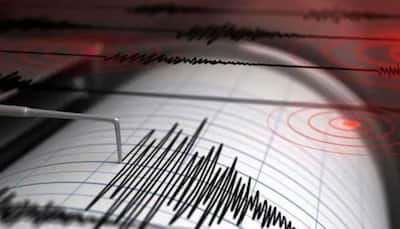On Monday morning, people in North India felt strong tremors, starting with an earthquake of 4.0 magnitude that hit Delhi-NCR around 5:36 am. A few hours later, another set of tremors was felt in Bihar at around 8 am.
The tremors were most noticeable for those living in high-rise buildings in Delhi, Noida, Greater Noida, and Ghaziabad. Many people rushed out of their homes, startled by the sudden shaking.
Even though the earthquake was recorded at just 4.0 on the Richter scale, many felt it much more strongly. The main reason for this was the earthquake’s epicenter—its exact point of origin—being located inside Delhi itself.
The quake started in the Jheel Park area near Dhaula Kuan, making it particularly intense for residents nearby. Some reports even mentioned a loud noise accompanying the tremors.
Srijan Pal Singh, a former advisor to the 11th President of India and the founder of the Kalam Centre and Homi Lab, explained why the quake felt stronger than expected. He posted on ‘X’: “The Delhi earthquake you just witnessed was around 4.0 on the Richter scale. That is not very high (quakes can go up to 6.0 and more), but you felt bigger tremors than ever before. Why? Because the epicenter is within Delhi itself. This is how quakes feel at the epicenter,” he said
According to the US Geological Survey (USGS), areas near the epicenter of an earthquake feel the strongest tremors. This happens because the seismic energy—energy released when the earth’s crust shifts—is most intense at the origin. As the energy moves outward, it weakens, so areas farther from the epicenter feel milder shaking.
Another factor that influenced Monday’s earthquake was its depth. The quake occurred just 5 kilometers below the surface, making the tremors stronger in Delhi-NCR. Typically, Delhi experiences tremors from earthquakes that start in northern states like Himachal Pradesh and Jammu & Kashmir. Since Monday’s quake originated within the city itself, the shaking felt much more intense.
The national capital is in an earthquake-prone region, meaning it experiences tremors quite often. One major reason is its closeness to the Himalayas, one of the most seismically active regions in the world.
Several fault lines (fractures in the earth’s surface where earthquakes originate) run close to the city. These include:
These geological factors make earthquakes more likely in and around Delhi.
Stay informed on all the , real-time updates, and follow all the important headlines in and on Zee News.









